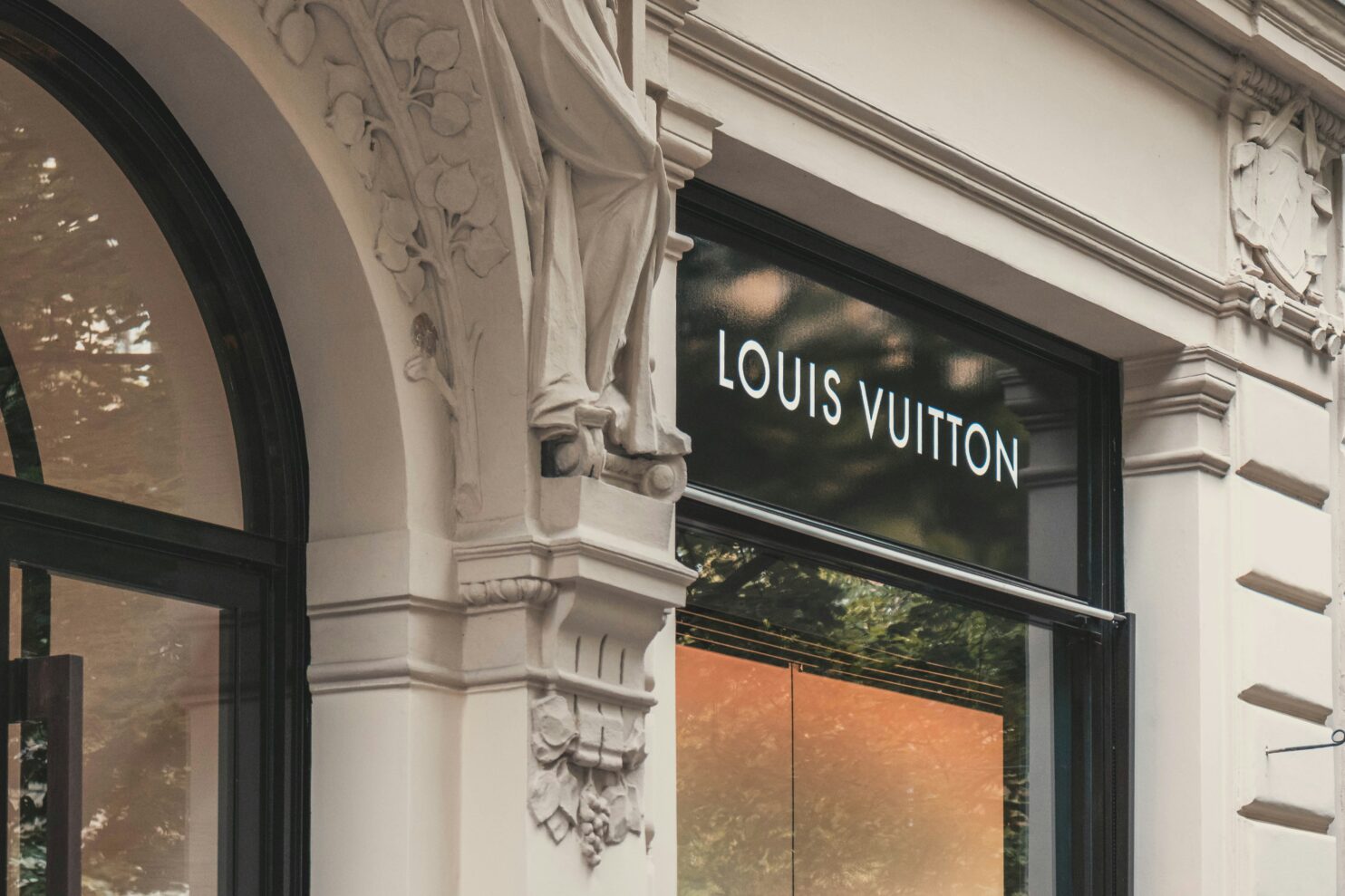4/15/2025 | From factory floors in Texas to futuristic runways in space, the fashion industry in 2025 is a study in contrasts. While luxury giants like Louis Vuitton wrestle with production challenges in the U.S., a wave of innovation is reshaping how fashion is made, sold, and even worn. From AI-driven sustainability efforts and biodegradable materials to Digital Product Passports and thought-provoking exhibitions at Milan Design Week, the industry is balancing tradition with transformation. Meanwhile, the impact of tariffs and the rise of space fashion signal just how far—and how fast—fashion continues to evolve.
Louis Vuitton’s Underperforming Texas Factory
Louis Vuitton’s handbag manufacturing facility in Alvarado, Texas, has encountered significant operational challenges since its opening in 2019. Issues such as high leather waste, quality control problems, and a shortage of skilled workers have plagued the factory. Despite initial plans to create 1,000 jobs, the factory employs fewer than 300 workers.
AI-Driven Sustainability and Biodegradable Materials
In 2025, the fashion industry is undergoing a significant transformation by embracing sustainability through AI-driven processes and biodegradable materials. Artificial intelligence is being utilized to predict demand fluctuations, optimize inventory, and reduce overproduction, thereby lowering waste levels. Additionally, designers are incorporating biodegradable materials into their collections, addressing the industry’s longstanding waste problem. These innovations are reshaping how fashion is conceived, produced, and consumed, signaling a pivotal shift towards eco-friendly practices. FTC Publications Newswire
Digital Product Passports for Enhanced Transparency
Digital Product Passports (DPPs) are becoming essential tools for fashion brands aiming to comply with upcoming regulations and boost transparency. These scannable digital tools provide detailed information about a product’s origin, materials, and environmental impact. Early adopters like Nobody’s Child have implemented DPPs to trace their supply chains down to raw material origins, aiming for full rollout by late 2025. https://www.voguebusiness.com/story/technology/digital-product-passports-lessons-from-an-early-adopter?utm_source=chatgpt.com
Milian Design Week 2025
Milan Design Week 2025, held from April 8–13, was a vibrant celebration of innovation, sustainability, and the fusion of fashion with design. Centered around the Salone del Mobile and the Fuorisalone, the event showcased groundbreaking concepts and collaborations that are shaping the future of design. The overarching theme, “Connected Worlds,” emphasized the interplay between humans, nature, and technology. Exhibitions explored how design bridges various aspects of existence, from the natural environment to technological advancements and cultural traditions.
Gucci: Presented Bamboo Encounters, inviting artists to reinterpret the iconic material in contemporary designs.
Prada: Hosted Prada Frames: In Transit at Milano Centrale station, a symposium exploring infrastructures underpinning everyday systems, such as mobility and climate justice.
LOEWE: Unveiled a unique exhibition reimagining the teapot, showcasing 25 innovative designs crafted by global artists and artisans, reflecting the brand’s dedication to heritage and craftsmanship.
Saint Laurent: Honored designer Charlotte Perriand by realizing her archival furniture sketches.
Miu Miu: Hosted a literary salon exploring women’s education.
Blue Origins Space Flight
On April 14, 2025, Blue Origin’s NS-31 flight launched the first all-women crew—and a new era of space fashion. Lauren Sánchez, Katy Perry, Gayle King, Amanda Nguyen, Aisha Bowe, and Kerianne Flynn wore custom flight suits designed by Monse, made from flame-resistant stretch neoprene for both safety and style. The suits featured sculpted silhouettes, cinched waists, dual zippers, and flared legs, blending influences from motocross, ski gear, and classic flight suits.
Using 3D body scans, each suit was precision-tailored for the wearer. The neoprene offered flexibility and comfort, while heat-pressed Blue Origin patches and contrast stitching added a futuristic edge. Sánchez called the design “elegant with a little spice.”
With full glam routines and custom Skims worn underneath, the mission proved that fashion and science can absolutely coexist in space.
Tariff-Induced Challenges for Women-Led Brands
Recent tariffs imposed by the U.S. government have disrupted global supply chains, disproportionately affecting women-led fashion brands. Companies like Argent and M.M.LaFleur face increased import costs and limited capacity to absorb these fees, leading to higher consumer prices. Many smaller brands struggle to shift production domestically due to inadequate infrastructure and resources.
As fashion strides into uncharted territory, it’s clear the future hinges on adaptability, transparency, and collaboration. Whether it’s responding to global supply chain challenges or reimagining design through a more sustainable lens, the industry is being reshaped by both creative vision and hard realities. One thing is certain: 2025 marks a turning point where technology, ethics, and artistry are no longer separate threads—but tightly woven into fashion’s next chapter.
Watch the Clothing Brief live here:

